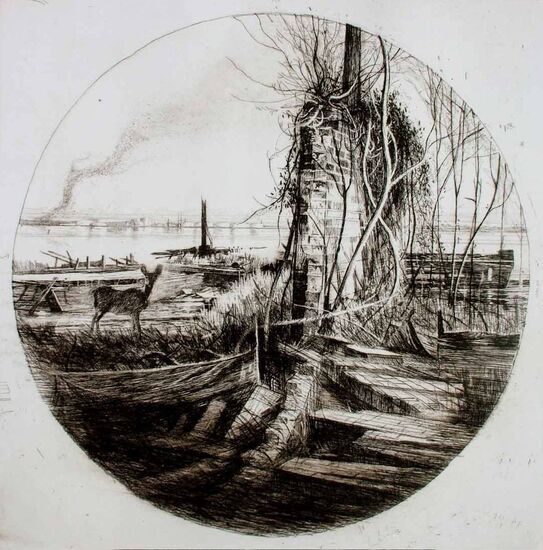The following is an excerpt from the opening chapter of “Gunboats on the Great Lakes 1866-68: the British Navy's show of force at the time of Confederation, on the Great Lakes 1866-68” by Cheryl MacDonald, published by Lorimer and distributed by Casemate Group.
Just before the Fenians invaded Canada West in June 1866, the New York World carried a story claiming there were numerous sympathizers in the British army, at least half of whom would join the cause when the Fenians gave the word. That report seemed to be substantiated by a later incident in Montreal in June 1866, as the Prince of Wales Rifles prepared to head for the border to repel an anticipated invasion. As they were about to board the train, a Sergeant-Major Mahony began shouting pro-Fenian slogans and then ran off, pursued by some of his brothers-in-arms. He was soon captured, but not before his actions reinforced the idea that even the soldiers assigned to guard Canadian territory were not above suspicion.
Huge numbers of people came to the illogical conclusion that all Irish were Fenians, and all Fenians terrorists. By the mid-1860s, it was impossible to avoid reports about Fenian activities and the threats they posed to peaceful Victorian society. And, with the Irish seemingly everywhere, it was not surprising that many Canadians truly believed they were continually under threat of attack.
But were they? When John O’Mahony established the Fenian Brotherhood in North America, its main purpose was to raise funds for the cause in Ireland. There was no real plan to attack Canada, although Fenians were encouraged to enlist during the American Civil War, partly because the military training they received would be valuable in the fight for Irish freedom, and partly because they would receive a regular income, some of which could be donated to the cause. As the war drew to a close, Fenian leaders became increasingly aware that it would be advantageous to mobilize these experienced soldiers for the Irish cause. There was also the realization that American authorities might be more likely to support an attack on Canada — or at least look the other way — once the Civil War ended. Although there had been a number of diplomatic crises that inflamed hostile feelings towards Britain and her North American colonies during the war, Lincoln and his government realized all too well that they could not fight the Confederacy and the British Empire simultaneously. But once a Northern victory seemed assured, the Fenians could consider an invasion of Canada. At worst, a successful attack might allow them to use Canadian territory as a bargaining chip in negotiations for Irish freedom. At best, the United States could be drawn into the conflict and take over Canadian territory, striking a serious blow against the British Empire.
Initially, the Fenians were divided about their course of action, with some preferring to stick to the organization’s original mandate of supporting efforts in Ireland. But, as dissension in the ranks grew, it became increasingly apparent that some kind of military campaign was required. Various possibilities were discussed. Some were practical, others ludicrous, but many details reached the public, usually through newspapers. The press was hungry for stories and in the mid-19th century, just as today, violence and sensationalism sold papers. With very little in the way of checks and balances against libel or inaccurate reporting in place, most newspapers had few qualms about publishing compelling stories before verifying all the facts. The Fenians themselves frequently discussed their plans and strategies in the open, often exaggerating their membership numbers and their financial and military resources for propaganda purposes. Although both British and Canadian spy networks were in place, the information they gathered was frequently inaccurate. Sorting out truth from fiction was next to impossible. Thousands of Canadians were left wondering just how dangerous the Fenians were, with no choice but to depend on rumour and their own anxieties for the answer.
Among the most anxious residents of Canada were members of the Orange Order, a fraternal organization established in Ireland in 1795 to commemorate the Protestant victory of William of Orange (later King William III) at the Battle of the Boyne in 1690. At worst extremely conservative and rabidly anti-Catholic, the Orange Order grew rapidly between 1845 and 1860, especially in Canada West, even though its activities had brought it into disrepute in Britain, where legislated reforms were abolishing discrimination against Catholics. The Order’s parades frequently sparked sectarian violence, and by 1850, they were banned in Britain. A decade later, legislation was in the works to keep Orange flags and other symbols out of public view. The organization
had fallen into such disfavor that when the Prince of Wales, the eldest son of Queen Victoria, toured Canada in 1860, the colonial secretary warned Canadian authorities that the royal party would not visit towns where the Orange Order had an official role in welcoming the prince. By this time, Orangemen were so integrally involved in Canadian business and politics that they were confident they could ignore the request and proceed according to their own agenda. Resplendent in their Orange regalia, thousands showed up to greet the prince in Kingston, but were disappointed when he refused to disembark from his boat. Two days later, with no sign of surrender from the Orangemen, the prince sailed for Belleville. Word of his departure quickly spread, giving a delegation of Orangemen ample time to board a train and arrive in Belleville before him.
The royal party had no choice but to continue on to the next scheduled stop in Cobourg. This time, the Orange delegation was thwarted by problems along the railway route, which, according to a report sent to Queen Victoria, had been caused by the kind of “curious accident” that sometimes took place when the government owned the rail line.
Not surprisingly, there was widespread newspaper coverage of the animosity between the Orangemen and the Fenians. In May 1864, Orangemen attacked a Corpus Christi parade in Toronto. That November, Irish Catholics celebrated Guy Fawkes Day, the anniversary of a 17th-century attempt to blow up the British parliament buildings, with a demonstration of their own. After meeting in Queen’s Park, 400 men split
into two companies. One marched east, one west, then, after two hours had passed, turned to salute each other with a volley of gunfire aimed towards the centre of town.7 If nothing else, it proved that the Irish in Toronto had access to firearms, which tied in to rumours that they were stockpiling guns and ammunition in Catholic churches and cemeteries, and that some priests were secretly drilling Fenians on church property after dark.
The number of Fenians probably never exceeded more than 3,500 in all of Canada, or about 1.3 per cent of the Irish-Catholic population. Still, because they were so
closely linked to the Fenians in the United States and could presumably call on them for support in the event of an armed insurrection, the danger they posed loomed extremely large in the minds of Orangemen, especially as the Fenians were fuelled by Irish nationalist rhetoric. As early as St. Patrick’s Day 1863, Michael Murphy, founder of the Hibernian Benevolent Association, claimed that there were “twenty thousand thorough nationalists in Canada who would not hesitate to sacrifice their lives.” Three years later, Murphy reported the number as 40,000.
Although the numbers were grossly exaggerated, there was definitely cause for concern about clashes between the Fenians, the Orangemen and others. In December 1864, the Orange Hall in Toronto was attacked during sectarian violence. Members of the Orange Order called for more dramatic measures to protect their ranks, but it was soon clear that the government believed regular troops, along with the militia, were equal to the task of defending the citizenry. Later that month, an alarming report reached the newspapers from Mono, a village near Orangeville (a town named after American settler Orange Lawrence, who in turn had been named in honour of the Orange Order). According to the report, on the night of December 12, several hundred Fenians converged on Mono’s Presbyterian church and town hall, then set out for Orangeville “destroying everything in their way and putting all Protestants to the sword, regardless of age or sex.” Racing against the clock, a messenger reached Orangeville with a communiqué calling for the local “infantry company” to arm themselves and confront the Fenians.
Due to some irregularity with the orders, the militia was not called out. In the meantime, the news of the atrocities spread: “the neighborhood being alarmed, farmers and their families flocked into the village from every direction for protection, and in a few hours the streets were crowded with an affrighted populace.” Most of them were armed with guns or whatever else they could carry.
The attack turned out to be a total fabrication, but that discovery did not assuage the fears of the Orangemen one bit. There were calls for the formation of a Protestant militia, an idea that was quickly dismissed by the government. Besides, as the Hamilton Evening Times wisely editorialized, “[t]o talk of a Fenian disturbance in Canada in which only Protestants would suffer, and the Catholics escape scot free, is to talk of an impossibility.” Only a few weeks earlier, the Times had described a scenario in which a Fenian attack in Ireland would be used as a diversion to keep British troops occupied while Fenian troops in North America invaded Canada, declared the country independent, and turned it over to the United States.
Cheryl MacDonald wrote, co-authored or edited nearly 40 books on Canadian history in her over 30-year career. In 2012, she received the Queen’s Diamond Jubilee Medal in recognition of her work promoting Canadian local history. She died in the fall of 2016 after a long battle with cancer.








